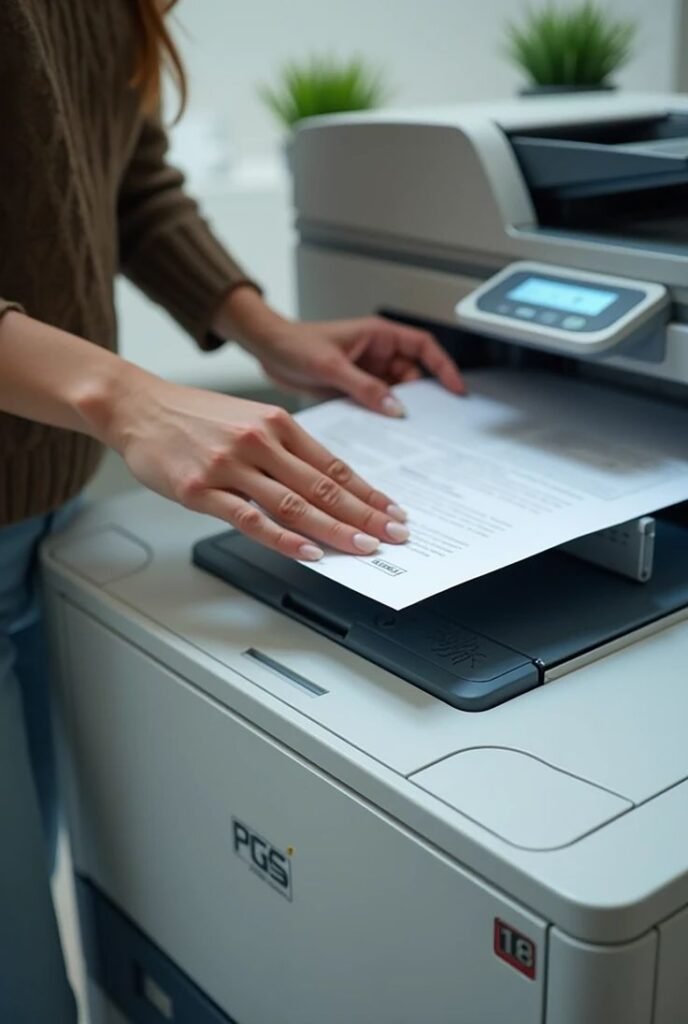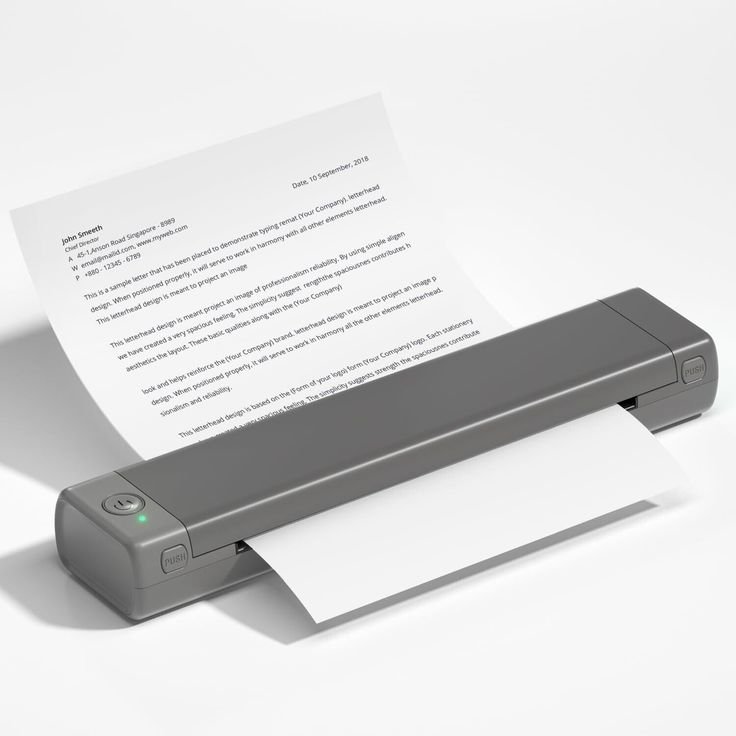Introduction
In today’s digital world, convenience and efficiency are top priorities for both personal and professional tasks. One of the most practical innovations to support this lifestyle is wireless printing. Whether you are working from home, managing office tasks, or Printing Wirelessly study materials, being able to send a document directly from your computer, smartphone, or tablet to your printer without using cables is a significant advantage.
However, despite its benefits, many users often encounter the frustrating issue of their printer not printing wirelessly. You hit the print button, expect the job to appear in seconds, but instead, nothing happens. Sometimes, the printer shows as offline, sometimes it isn’t detected at all, and in some cases, you might get incomplete or delayed prints.
This problem is extremely common and can be caused by various factors—ranging from Wi-Fi connectivity issues, outdated drivers, incorrect settings, to router restrictions. The good news is that in most cases, these problems can be fixed with a few practical steps.
This guide will walk you through everything you need to know—from understanding how wireless Printing Wirelessly works, identifying common causes, applying basic and advanced fixes, exploring brand-specific solutions, and finally, ensuring smooth performance with preventive measures. By the end of this article, you’ll not only be able to fix your current problem but also avoid similar issues in the future.
Understanding Wireless Printing
Before diving into troubleshooting, it’s important to understand what Printing Wirelessly is and how it works. This knowledge makes it easier to figure out why issues occur and how to resolve them.
What is Wireless Printing?
Printing Wirelessly refers to the process of sending print jobs from a device such as a computer, laptop, smartphone, or tablet to a printer without using physical cables. Instead, the connection is established through wireless technologies like Wi-Fi, Bluetooth, or cloud-based services.
This means you can print from anywhere in your home or office as long as your device and printer are connected to the same network (or supported cloud service).

Benefits of Wireless Printing
- Convenience and Flexibility – No need to sit right next to the printer. You can print from your couch, kitchen, or even another room.
- Multi-Device Support – A single wireless printer can serve multiple devices (laptops, smartphones, tablets, desktops) without additional cables.
- Decluttered Workspace – Eliminates the mess of tangled wires.
- Remote Printing Options – With cloud Printing Wirelessly solutions, you can send files to your printer from outside your home or office.
- Compatibility with Smart Devices – Many modern printers support direct Printing Wirelessly from apps or features like Apple AirPrint, Google Cloud Print (legacy), and manufacturer apps.
Types of Wireless Printing
- Wi-Fi Printing – The most common method. Printer and device connect to the same Wi-Fi network.
- Wi-Fi Direct – Devices connect directly to the printer without needing a router.
- Bluetooth Printing – Useful for short-distance Printing Wirelessly when Wi-Fi is unavailable.
- Cloud Printing – Uses the internet to connect to printers remotely (e.g., HP ePrint, Epson Connect, or legacy Google Cloud Print).
- AirPrint (Apple) – A feature for iPhones, iPads, and Macs to print seamlessly on AirPrint-enabled printers.
Why Printing Wirelessly Sometimes Fails
Even though Printing Wirelessly is convenient, it relies heavily on network stability, proper configuration, and updated software. Any disruption in these areas can result in failure. For example:
- A weak Wi-Fi signal may prevent the printer from being detected.
- An outdated driver may cause compatibility errors.
- Incorrect network settings may put the printer in “offline” mode.
Understanding these basics will make troubleshooting easier.
Common Causes of Printing Wirelessly Issues
When your printer refuses to print wirelessly, it can feel like a mystery. However, in most cases, the problem falls into a few clear categories. By identifying the root cause, you can apply the right fix without wasting time on random troubleshooting.
Here are the most common causes of Printing Wirelessly failures:
1. Network Connectivity Problems
The foundation of Printing Wirelessly is your Wi-Fi network. If the connection between your device and printer is unstable or broken, printing will fail.
- Weak Wi-Fi signal – Printers placed far from the router often struggle to maintain a steady connection.
- Network congestion – Too many devices on the same Wi-Fi can slow down communication.
- Frequent drops – If your internet disconnects often, your printer may lose its IP address and go offline.
- Wrong network – Sometimes, the computer and printer are connected to different Wi-Fi networks (for example, your device is on “Home_WiFi_5G” while the printer is on “Home_WiFi_2.4G”).
2. Printer Shows as Offline or Not Detected
A very common complaint is: “My printer is showing offline even though it’s turned on.”
This usually happens when:
- The printer lost its connection to the Wi-Fi.
- The device cannot “discover” the printer on the network.
- Printer power-saving mode disables Wi-Fi temporarily.
- Incorrect default printer is selected on the computer.
3. Driver and Software Conflicts
Printers rely on drivers to communicate with your computer or mobile device. If these drivers are outdated, corrupted, or incompatible, Printing Wirelessly tasks may fail.
- Windows updates may cause older drivers to stop working.
- Printer software installed incorrectly can lead to communication errors.
- Using generic drivers instead of brand-specific drivers can limit wireless functionality.
4. Incorrect Printer Settings
Sometimes, the issue lies in the printer settings itself:
- The printer may be set to “Use Printer Offline” mode.
- Wi-Fi Direct might be enabled instead of normal Wi-Fi, confusing the device.
- Security features like MAC filtering or firewall settings on the router may block printer access.
5. Router or Firewall Restrictions
Routers are the traffic managers of your home or office network. If configured incorrectly, they may block your printer:
- Firewall settings may prevent communication between devices.
- Certain routers block peer-to-peer connections by default.
- VPNs or proxy connections may interfere with wireless printing.
6. Device Compatibility Issues
Not all devices and printers communicate in the same way.
- Some older printers do not support modern Wi-Fi standards.
- iPhones and iPads need AirPrint support (or manufacturer apps).
- Android devices may require a dedicated app (e.g., HP Smart, Canon PRINT Inkjet/SELPHY, Epson iPrint).
7. Printer Firmware Problems
Just like computers, printers also run on firmware. If the firmware is outdated, it can cause connectivity issues, failed print jobs, or limited features.
8. Environmental and Hardware Factors
- Printers placed too close to other electronic devices (like microwaves or cordless phones) may face Wi-Fi interference.
- Internal printer Wi-Fi adapter may be faulty.
- If the printer is too old, it might not handle modern wireless encryption methods.
Real-World Scenarios of Printing Wirelessly Issues
Understanding common causes is helpful, but seeing them in real-world contexts makes troubleshooting much easier. Here are some typical situations users face:
Scenario 1: The Printer Keeps Going Offline
Maria works from home and has an HP wireless printer. Every morning, she tries to print reports, but the printer shows as offline.
Why it happens:
- Her printer automatically disconnects from Wi-Fi when in sleep mode.
- Her laptop is connected to the 5GHz network, while the printer only supports 2.4GHz.
Solution:
- Keep the printer awake during work hours.
- Ensure both printer and device are on the same network frequency.
Scenario 2: Print Jobs Are Stuck in Queue
John clicks “Print” on his MacBook, but nothing happens. His print queue shows multiple pending jobs.
Why it happens:
- Driver conflicts after a macOS update.
- Firewall settings blocking the printer.
Solution:
- Reset the Printing Wirelessly system on Mac.
- Reinstall printer drivers.
- Temporarily disable firewall to test connectivity.
Scenario 3: Smartphone Cannot Find Printer
Ravi wants to print a photo from his Android phone using Google Cloud Print alternative. His device cannot detect the printer.
Why it happens:
- The printer isn’t cloud-connected.
- Android device requires a manufacturer-specific app.
Solution:
- Install HP Smart, Canon PRINT, or Epson iPrint depending on printer brand.
- Connect printer to the same Wi-Fi network as the device.
Scenario 4: Weak Wi-Fi Signal Causing Intermittent Printing
A shared office printer sometimes prints documents, sometimes fails. Employees seated far from the router complain the printer isn’t visible.
Why it happens:
- Weak Wi-Fi signal due to distance and obstacles (walls, metal furniture).
Solution:
- Move the printer closer to the router or install a Wi-Fi extender.
- Use a wired connection temporarily if Printing Wirelessly is critical.
Scenario 5: VPN or Network Restrictions
Priya uses a VPN on her laptop for work. She tries to print a document wirelessly at home, but the printer isn’t detected.
Why it happens:
- VPN creates a virtual network, isolating the device from the local Wi-Fi network.
Solution:
- Temporarily disconnect the VPN to print.
- Use cloud Printing Wirelessly if VPN is necessary.
Scenario 6: Outdated Firmware or Drivers
A Brother printer works perfectly on some devices but fails on new laptops.
Why it happens:
- Printer firmware is outdated.
- New devices need updated drivers for wireless communication.
Solution:
- Update printer firmware from the manufacturer’s website.
- Install the latest drivers on all devices.
📌 Key Takeaway: Wireless Wirelessly issues are usually predictable once you know the patterns. Most problems are network-related, software-related, or device compatibility issues. Identifying the scenario closest to your situation can save a lot of trial and error.

Basic Troubleshooting Steps
Before diving into advanced fixes, it’s essential to try simple, practical solutions. Often, wireless Wirelessly issues can be resolved quickly with a few checks and adjustments.
1. Check Power and Connections
- Make sure your printer is turned on and properly powered.
- Check for blinking lights or error indicators on the printer panel; these can indicate paper jams, low ink, or connectivity issues.
- Ensure the printer is within Wi-Fi range—avoid placing it in another room or behind thick walls.
Tip: Even if the printer is wireless, a brief USB connection can sometimes help reset its network configuration.
2. Restart Devices
A classic but effective step:
- Turn off the printer, computer, and router.
- Wait for about 30 seconds to 1 minute.
- Turn on the router first, then the printer, and finally the device you’re Wirelessly from.
Restarting refreshes network connections and often resolves temporary glitches.
3. Ensure Correct Wi-Fi Network
Wireless printers need the same Wi-Fi network as your device:
- Check the printer’s network settings through its display panel or printer software.
- Confirm your computer or mobile device is connected to the exact same SSID (Wi-Fi name).
- Avoid connecting to “guest” networks or 5GHz/2.4GHz mismatches if your printer only supports one frequency.
Example: If your printer supports 2.4GHz Wi-Fi only, connecting your laptop to 5GHz may make the printer invisible.
4. Reconnect the Printer to Wi-Fi
If the printer has lost its wireless connection:
- Open the printer’s network setup menu.
- Select Wi-Fi Setup Wizard or similar option.
- Choose your home or office Wi-Fi network.
- Enter the correct Wi-Fi password.
- Test by Wirelessly a network configuration page (most printers have this option in the menu).
Tip: Some printers have a Wi-Fi Protected Setup (WPS) button. Pressing this can quickly connect the printer to compatible routers without typing a password.
5. Test with Another Device
- Try sending a print job from another device: laptop, smartphone, or tablet.
- If Wirelessly works on a different device, the problem is likely with the original device (driver, app, or settings).
- If it doesn’t work on any device, the printer or network is likely the issue.
6. Clear the Print Queue
Sometimes, print jobs get stuck in the queue, preventing new jobs from printing.
On Windows:
- Press Windows + R, type
services.msc, and press Enter. - Find Print Spooler, right-click, and select Stop.
- Navigate to
C:\Windows\System32\spool\PRINTERSand delete all files. - Restart Print Spooler service.
On macOS:
- Go to System Preferences → Printers & Scanners.
- Select your printer → Open Print Queue.
- Cancel all pending jobs and try Wirelessly again.
7. Print a Test Page
After performing these basic steps, always print a test page:
- On Windows:
Settings → Devices → Printers & Scanners → Print a Test Page. - On macOS:
System Preferences → Printers & Scanners → Print Test Page. - Many printers also have a physical test page button in the menu.
This helps verify if the issue is resolved or if advanced troubleshooting is needed.
Fixes for Windows Users
Windows users often face Printing Wirelessly issues due to driver conflicts, software errors, or network settings. Here’s a step-by-step guide to fix common problems.
1. Run the Windows Printer Troubleshooter
Windows includes a built-in troubleshooter that can automatically detect and fix many Printing Wirelessly issues.
Steps:
- Press Windows + I to open Settings.
- Go to Update & Security → Troubleshoot → Additional troubleshooters.
- Select Printer → Run the troubleshooter.
- Follow on-screen instructions.
The troubleshooter will attempt to identify problems like:
- Printer offline status
- Stuck print jobs
- Driver conflicts
2. Update or Reinstall Printer Drivers
Outdated or corrupted drivers are a major cause of wireless Printing Wirelessly failures.
Steps to Update Drivers:
- Press Windows + X → Device Manager.
- Expand Printers or Print queues.
- Right-click your printer → Update driver → Search automatically for updated driver software.
Steps to Reinstall Drivers:
- Open Settings → Devices → Printers & Scanners.
- Select your printer → Remove device.
- Visit the manufacturer’s website (HP, Canon, Epson, Brother) and download the latest driver for your model.
- Install and reconnect to Wi-Fi.
3. Check Firewall and Antivirus Settings
Firewalls or antivirus programs may block printer communication.
Steps:
- Temporarily disable the firewall or antivirus software.
- Try Printing Wirelessly a test page.
- If it works, add the printer software to exceptions in your firewall or antivirus settings.
Note: Always re-enable protection after testing.
4. Set the Printer as Default
Sometimes Windows tries to send jobs to a different printer.
Steps:
- Go to Settings → Devices → Printers & Scanners.
- Select your printer → Set as default.
- Try Printing Wirelessly again.
5. Add the Printer Manually
If Windows cannot detect your printer automatically:
- Go to Settings → Devices → Printers & Scanners → Add a printer or scanner.
- If your printer doesn’t appear, select “The printer that I want isn’t listed”.
- Choose Add a printer using a TCP/IP address or hostname.
- Enter the printer’s IP address (found via printer network settings).
- Follow the prompts to complete installation.
6. Restart the Print Spooler Service
The print spooler manages print jobs. Restarting it can resolve stuck jobs.
Steps:
- Press Windows + R, type
services.msc, and press Enter. - Scroll to Print Spooler → Right-click → Restart.
- Try Printing Wirelessly again.
7. Disable “Use Printer Offline” Mode
If this setting is enabled, Windows won’t send jobs to the printer.
Steps:
- Open Control Panel → Devices and Printers.
- Right-click your printer → See what’s printing.
- Click Printer → Uncheck “Use Printer Offline”.

8. Check Network Profile
The network profile on your device determines how it interacts with other devices on the same network. On Windows, networks can be classified as Public or Private. When a network is set to Public, your computer restricts local device discovery for security reasons. This means your printer might not be visible or accessible, causing wireless Printing Wirelessly to fail.
Ensure your PC is using the Private network profile. Public networks often block local device discovery.
To fix this:
- Open Settings → Network & Internet → Wi-Fi.
- Click on your connected network and select Properties.
- Change the network profile from Public to Private.
Using a Private network ensures that your device can communicate freely with other devices, including your wireless printer. This small adjustment often resolves cases where printers are undetectable or offline, especially after connecting to a new Wi-Fi network.
For macOS and mobile devices, ensure that both the printer and device are connected to the same Wi-Fi network, and avoid networks with strict isolation features or guest modes, as these can block communication.
Always double-check that both the printer and device are on the same Wi-Fi frequency band (2.4GHz or 5GHz), as mismatched bands can also prevent Printing Wirelessly even on a Private network.
📌 Key Takeaway: Windows-specific fixes address issues that basic troubleshooting can’t, such as driver conflicts, firewall blocks, and network profile problems. Applying these steps resolves the majority of wireless Printing Wirelessly issues on Windows machines.
Related Post: 7 Proven Solutions for When Your External Monitor Is Not Detected

